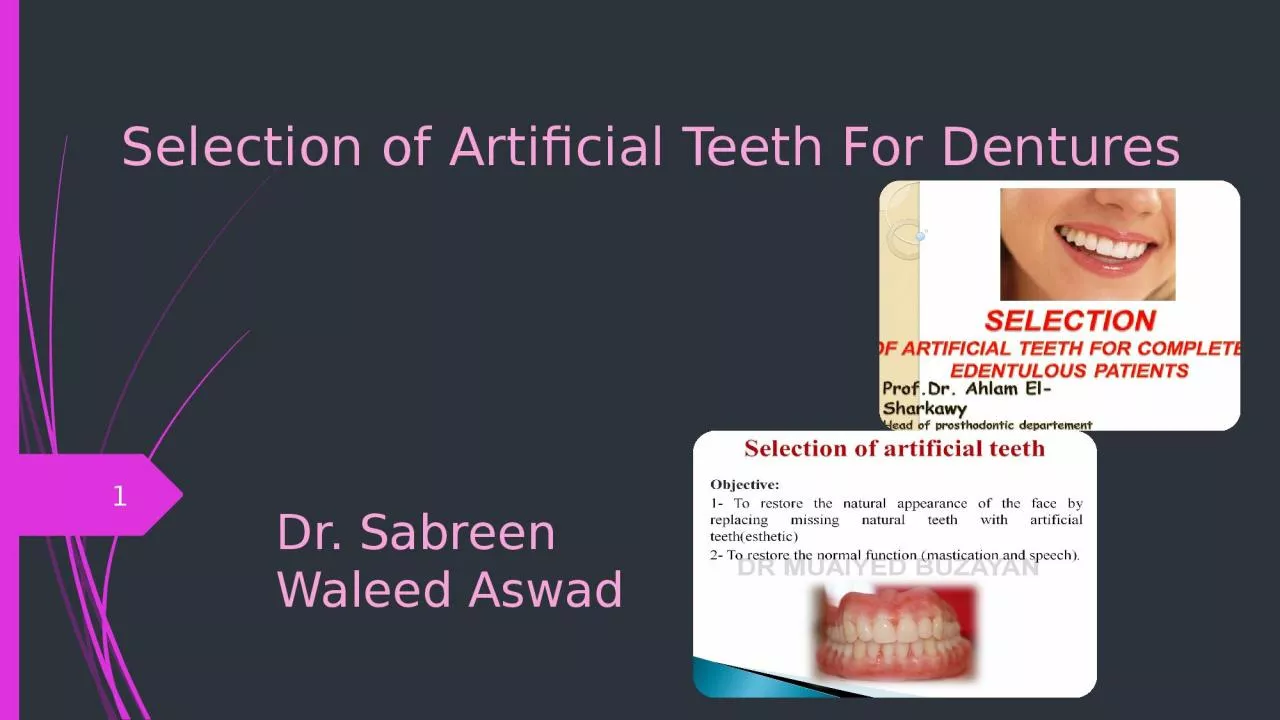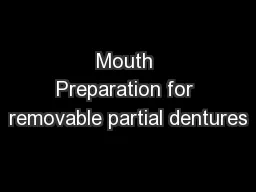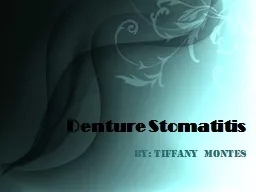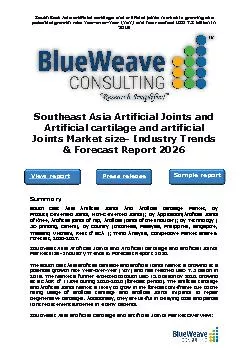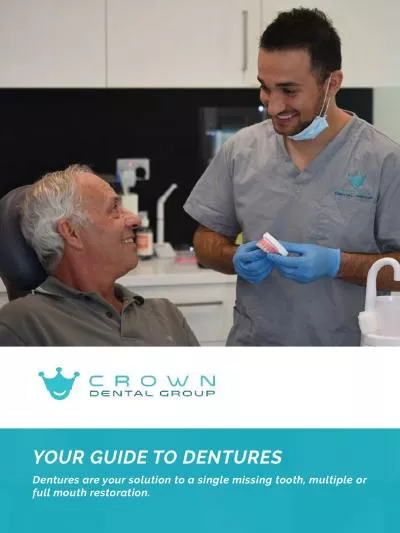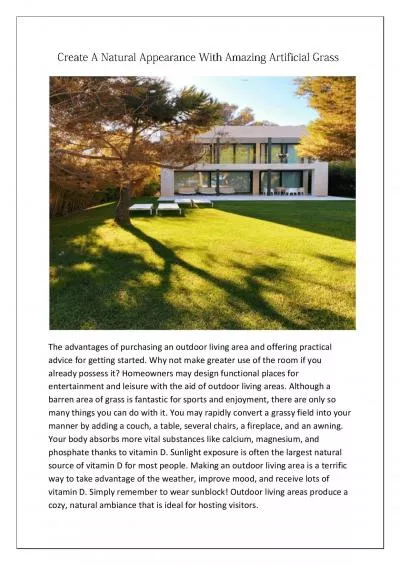PPT-Selection of Artificial Teeth For Dentures
Author : elise | Published Date : 2022-06-28
Dr Sabreen Waleed Aswad 1 Introduction Teeth selection is very important as the selection of the appropriate shade size and form of the artificial teeth determines
Presentation Embed Code
Download Presentation
Download Presentation The PPT/PDF document "Selection of Artificial Teeth For Dentur..." is the property of its rightful owner. Permission is granted to download and print the materials on this website for personal, non-commercial use only, and to display it on your personal computer provided you do not modify the materials and that you retain all copyright notices contained in the materials. By downloading content from our website, you accept the terms of this agreement.
Selection of Artificial Teeth For Dentures: Transcript
Download Rules Of Document
"Selection of Artificial Teeth For Dentures"The content belongs to its owner. You may download and print it for personal use, without modification, and keep all copyright notices. By downloading, you agree to these terms.
Related Documents

